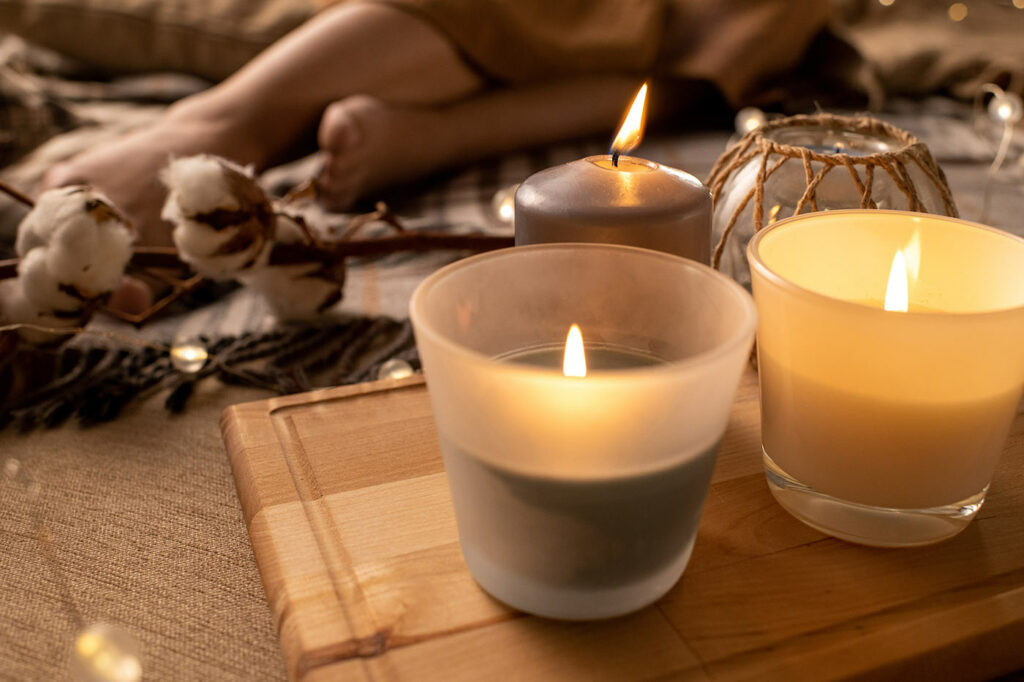History of Candlemaking
Candles have been used for thousands of years and up until the early 1900s they were the single source for artificial light. Candles also have a rich tradition in religious services in many faiths through-out history. Today, the candle is no longer the single source of light but is used abundantly in religious services as well as in birthday celebrations, holidays, and home decorations.
Make Your Own Candles!
Buy Candle Making Supplies
Originally, candles were made from tallow, which was extracted from cattle and sheep, in the early Egyptian and Roman times. These early candles burned poorly and probably smelled even worse. The Roman Empire was the first to provide evidence of a candle that resembles the candle today. They melted the tallow until it was a liquid and poured it over fibers of flax, hemp, and/or cotton, which were used as a wick. These candles were used in religious ceremonies as well as lighting for their travel and homes.
Types of Candles
There are a wide array of candles and candle types that are on the market today. Candles are either created to be free standing or to be filled in a vessel. The candles are broken down into categories:
CONTAINER CANDLES
A candle is created from wax poured into a special glass, tan, and/or pottery. Container candles can be used as decorative and are typically highly fragranced.
VOTIVE CANDLES
Free-standing candles were originally produced as white and unscented and are typically lit for devotion or gratitude in religious ceremonies. Today votive candles are available in a wide array of color and fragrances. Votive candles should be made intended to burn in an appropriate holder.
HURRICANE CANDLES
A very unique candle that has an outer shell that typically has dried flowers, shells, and/or other items embedded in the wax. The candle is designed to burn down the middle, illuminating the outer shell.
TAPER CANDLES
A very slender candle can range in height from 6” up to 20” and is used in an appropriate holder.
TEA-LIGHT
A very small cylindrical candle that is in its own aluminium or polycarbonate holder.
PILLAR CANDLES
A rigid, free-standing candle that is available in a wide variety of shapes and designs.
During the Middle Ages candles became more prevalent in worship. It was at this time that beeswax was used to make candles. These beeswax candles were made much like the Romans made their candles with tallow. Beeswax was a drastic improvement from the tallow, but limited quantities were available, which made it expensive limiting it to clergy and the upper class.
In colonial America the early settlers discovered that they were able to obtain a very appeasing wax by boiling the berries from the bay-berry shrub. This wax created a very sweet smelling and good burning candle; however the process of making the bayberry wax was very tedious and tiresome.
In the 18th century the whaling industry thrived and as a result, whale oil was available in large quantities. Spermaceti wax was derived from the whale oil and was used as a replacement for tallow, beeswax, and bayberry wax. The spermaceti wax candle did emit a rather unpleasant smell but the wax was hard enough to hold shape in the hot summer months.
The 19th century was a defining time for the candles and candle making. The first patented candle making machines were introduced. This breakthrough allowed candles to reach the homes of all classes. It was also right around this same time that a chemist named Michael Eugene Chevreul identified for the first time that tallow or animal fat consisted of various fatty acids. One of the fatty acids he identified was stearine (stearic acid). In 1825, Chevreul and another chemist named Joseph Gay Lussac patented a process for candle making from crude stearic. This process drastically improved the quality of candles.
The braided wick was also invented in the 19th century. Wicks before this time were made simply of twisted strands of cotton, which burned very poorly and needed constant maintenance. The braided wick was tightly plaited and a portion of the wick curled over and enabled it to be completely consumed.
It was in the middle of the 19th century that paraffin wax was first used in a candle in Battersea, UK. This led to the commercial production of paraffin, which is an oil distillate. Paraffin burned clean, bright and without an odor. The paraffin was also blended with stearic acid, which hardened the wax and created a superior and cheaper candle.
Today the candle market offers candle lovers a wide variety of candles produced from a wide variety of waxes: paraffin, vegetable waxes, beeswaxes and the newest trend of gel waxes. These candles are offered in a myriad of colors, shapes, designs and fragrances. Candles are no longer the sole source of light but they are desired for their ambience, home decoration and fragrance.

